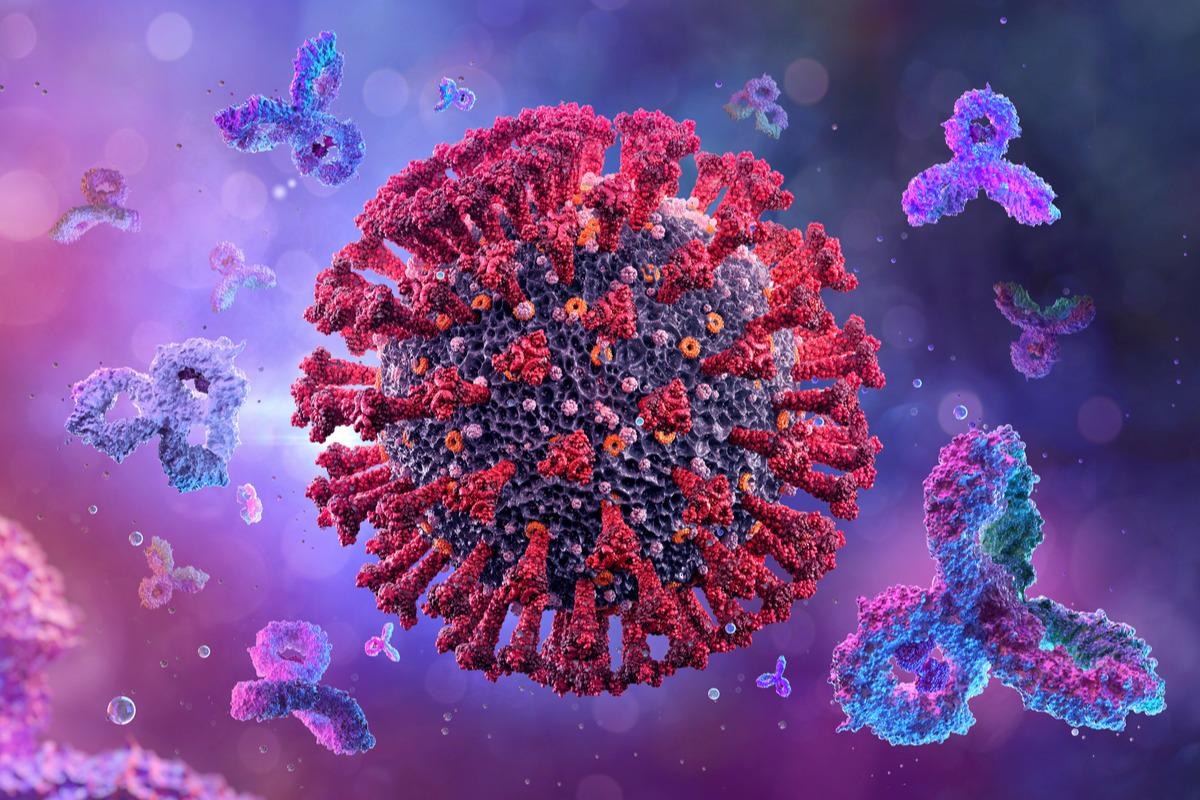 By Sam HancockReviewed by Danielle Ellis, B.Sc.Nov 25 2021
By Sam HancockReviewed by Danielle Ellis, B.Sc.Nov 25 2021Severe acute respiratory syndrome coronavirus 2 (SARS-CoV-2) variants continue to emerge worldwide. South America is struggling with the Gamma variant, while the Delta variant is the cause of most new infections across the U.S. and Europe. These variants have repeatedly shown the ability to evade both vaccine-induced and natural immunity. The rising case numbers in Europe have even forced some countries back into costly and restrictive lockdowns.
 Study: A COVID-19 peptide vaccine for the induction of SARS-CoV-2 T cell immunity. Image Credit: Corona Borealis Studio/Shutterstock
Study: A COVID-19 peptide vaccine for the induction of SARS-CoV-2 T cell immunity. Image Credit: Corona Borealis Studio/Shutterstock
In a study published in Nature, researchers from University Hospital Tübingen have been investigating the results from a Phase I trial for a new vaccine against SARS-CoV-2 variants.
The study
In the first part of the testing, 12 healthy adults were selected for administration. In the second part, this doubled to 24. Volunteers were given one dose of the CoVac-1 vaccine on day one and were checked regularly for immunogenicity and safety analyses until day 28 and day 56. There were no serious adverse effects and no grade four adverse effects. In 18-81% of participants, events were mild-to-moderate.
As the researchers expected, a granuloma/induration formed at the injection site and lasted the duration of the experiment. Six percent of participants suffered from a grade 3 adverse effect – 19% of these were erythema (a type of skin rash), accompanied by severe swelling in 6% of participants. Twenty-two percent of patients reported the swelling of lymph nodes – lymphadenopathy, and 25% reported ulcerations at the vaccination site. Two of these ulcerations were grade 2, but all healed without surgical or drug intervention within 20 days. No fever or other inflammatory adverse effects were reported, and all other systemic adverse effects were mild. No SARS-CoV-2 infection was observed in any participant.
Results
The scientists determined the immunogenicity of the vaccine by using interferon (IFN)-gamma enzyme-linked immunospot (ELISPOT) assays to observe CD4+ and CD8+ T cell responses to six SARS-CoV-2 HLA-DR vaccine T-cell epitopes, as well as HLA class I-binding peptides. They examined T cell responses at baseline and days 7, 14, 28, and 56, as well as three months post-vaccination. All participants were negative for SARS-CoV-2 T cell response at baseline.
By day 28, all individuals showed a ~100/200 fold increase in response from baseline. These responses targeted multiple CoVac-1 peptides, most targeting the ORF-8 derived from SARS-CoV-2, followed by P5-mem and P4-env, but all peptides were targeted. The lowest response was to P2_nuc, at 58%. These responses persisted until month 3 in all participants, but IFN-gamma T cell response decreased over time.
The intensity of these responses was still massively higher than those from individuals who had previously been infected with coronavirus disease 2019 (COVID-19), with an up to 39-fold increase. The vaccine-induced T cells were also extremely reactive, detecting the peptides down to 1mg/mL. The intensity of the response was also impressive, significantly exceeding the spike-specific T cell responses induced by mRNA adenoviral vector-based vaccination, as well as traditional heterologous vaccination.
The researchers also analyzed the ability of the CoVac-1 induced immune activity to respond to certain variants of concern, specifically Alpha, Beta, Gamma, and Delta – all of which have shown some ability to evade previously induced immunity. Half of the vaccine peptides were not affected by any mutation associated with these variants.
None of the mutations from the Delta or Gamma strains affect the peptides. The Alpha strain can affect two of the peptides, P2_nuc and P6_ORF8, and the Beta variant can affect P3_spi with two separate amino acid changes.
However, T-cell responses to peptide pools comprising these mutated peptides were still detectable in every participant, even against the affected peptides. The intensity of the T-cell response was reduced, but the vaccine should still provide a reasonable level of protection.
Conclusion
The authors highlight that this Phase I trial shows that this vaccine candidate appears reasonably safe and induces potent immune responses after a single vaccination.
While some adverse effects were reported, none were life-threatening or particularly dangerous. The diversity of the induced T-cell response is a major benefit to the vaccine. In some individuals, anti-spike IgGs were even detected, suggesting that the T-cell response might stimulate B cells and boost cross-reactive SARS-CoV-2 antibodies.
As variants of concern continue to arise, this vaccine could prove invaluable in helping to protect the most at-risk individuals against SARS-CoV-2 and help curb the transmission of variants that have shown the ability to cause breakthrough infections even in fully vaccinated individuals.